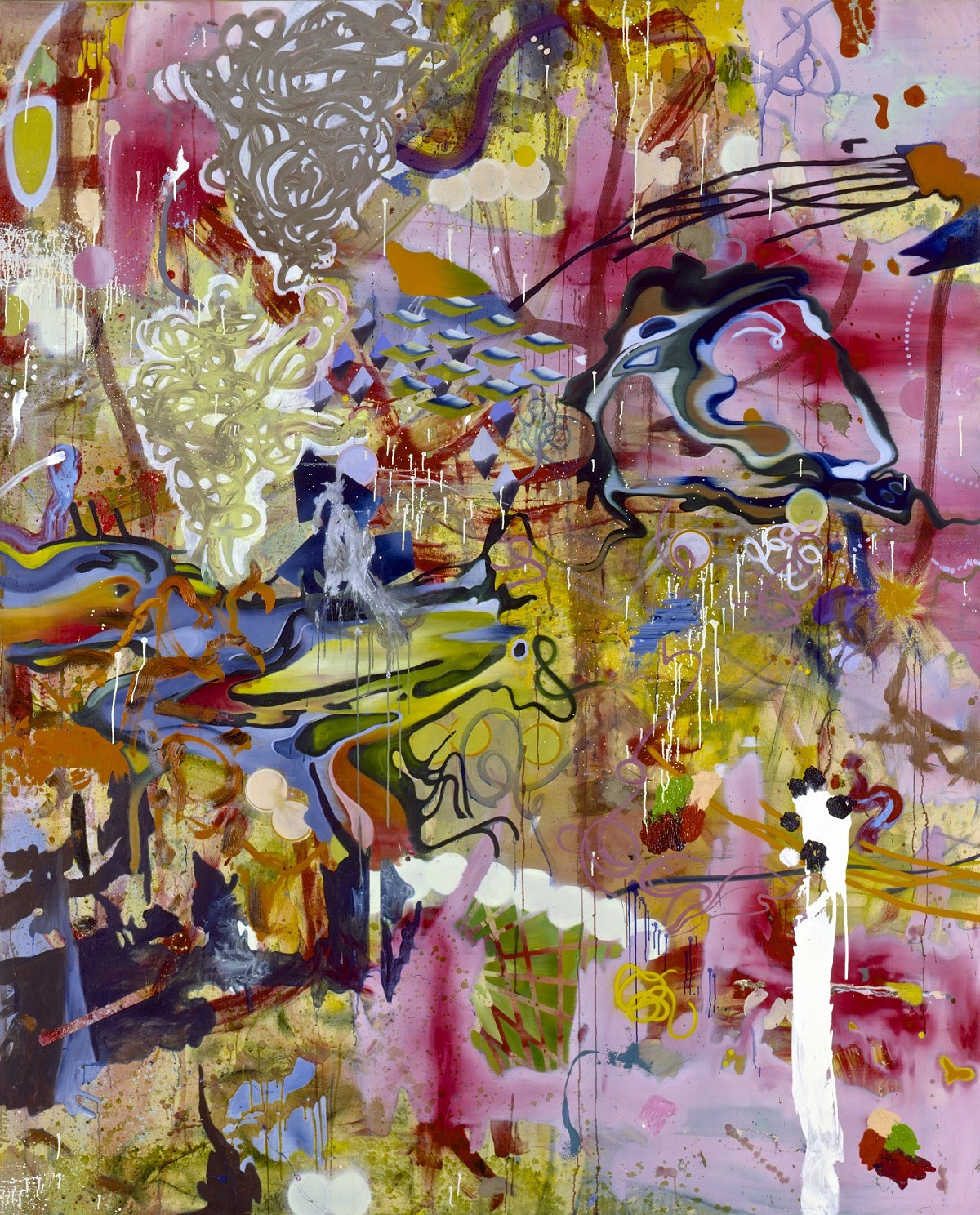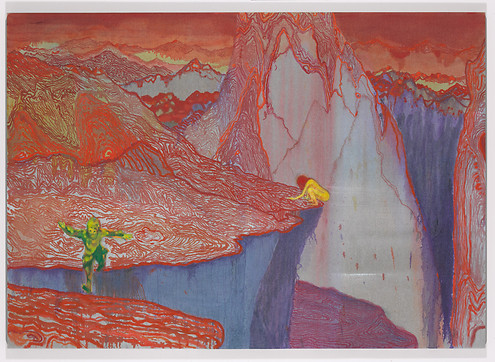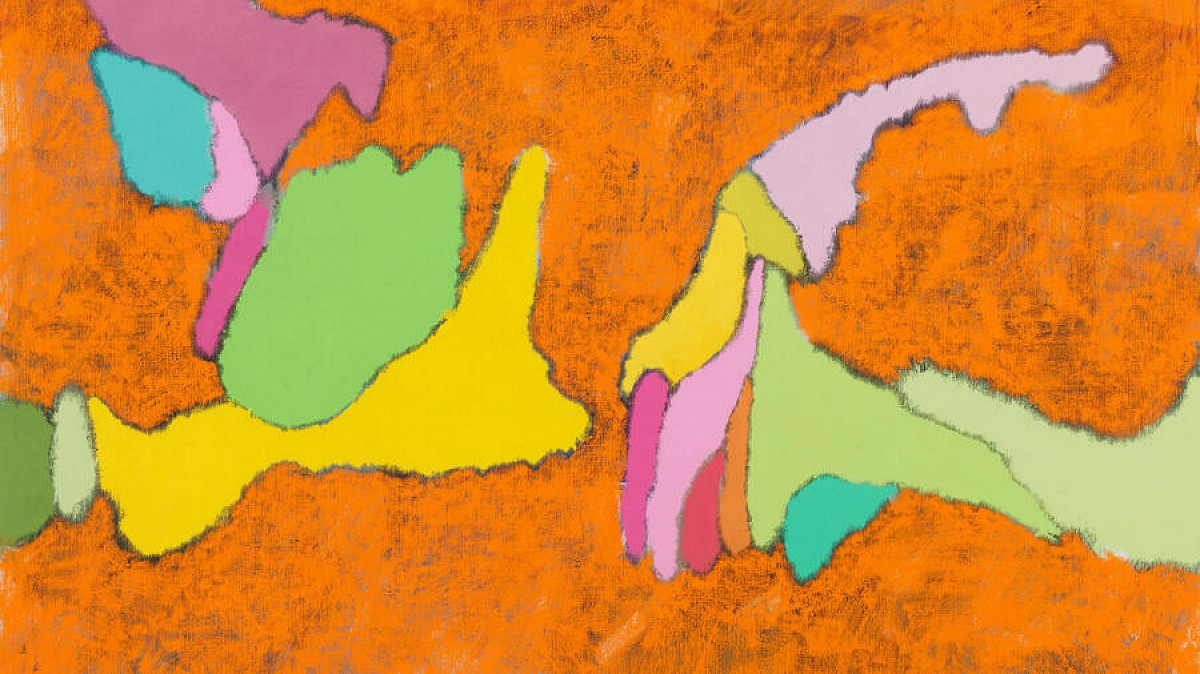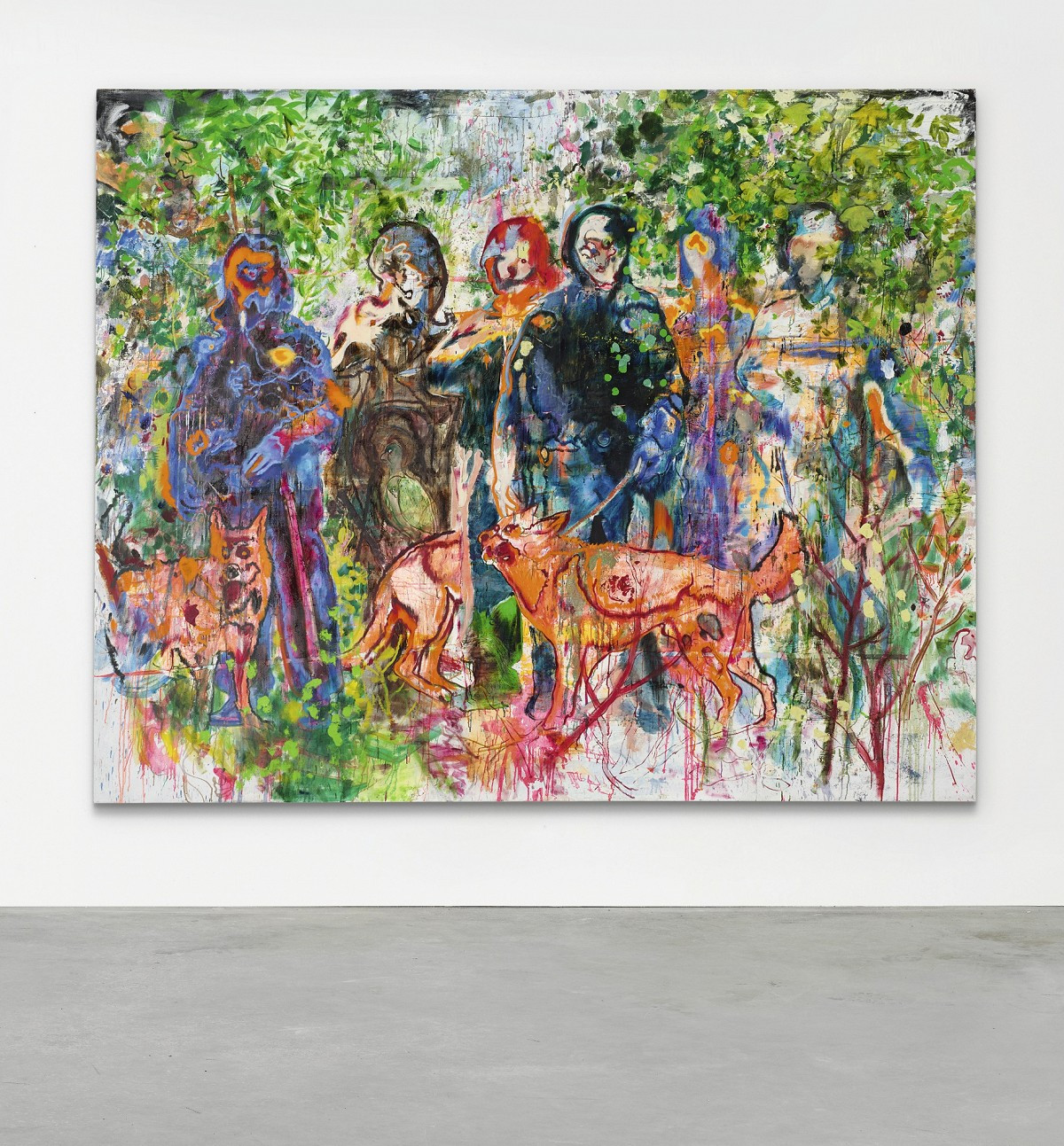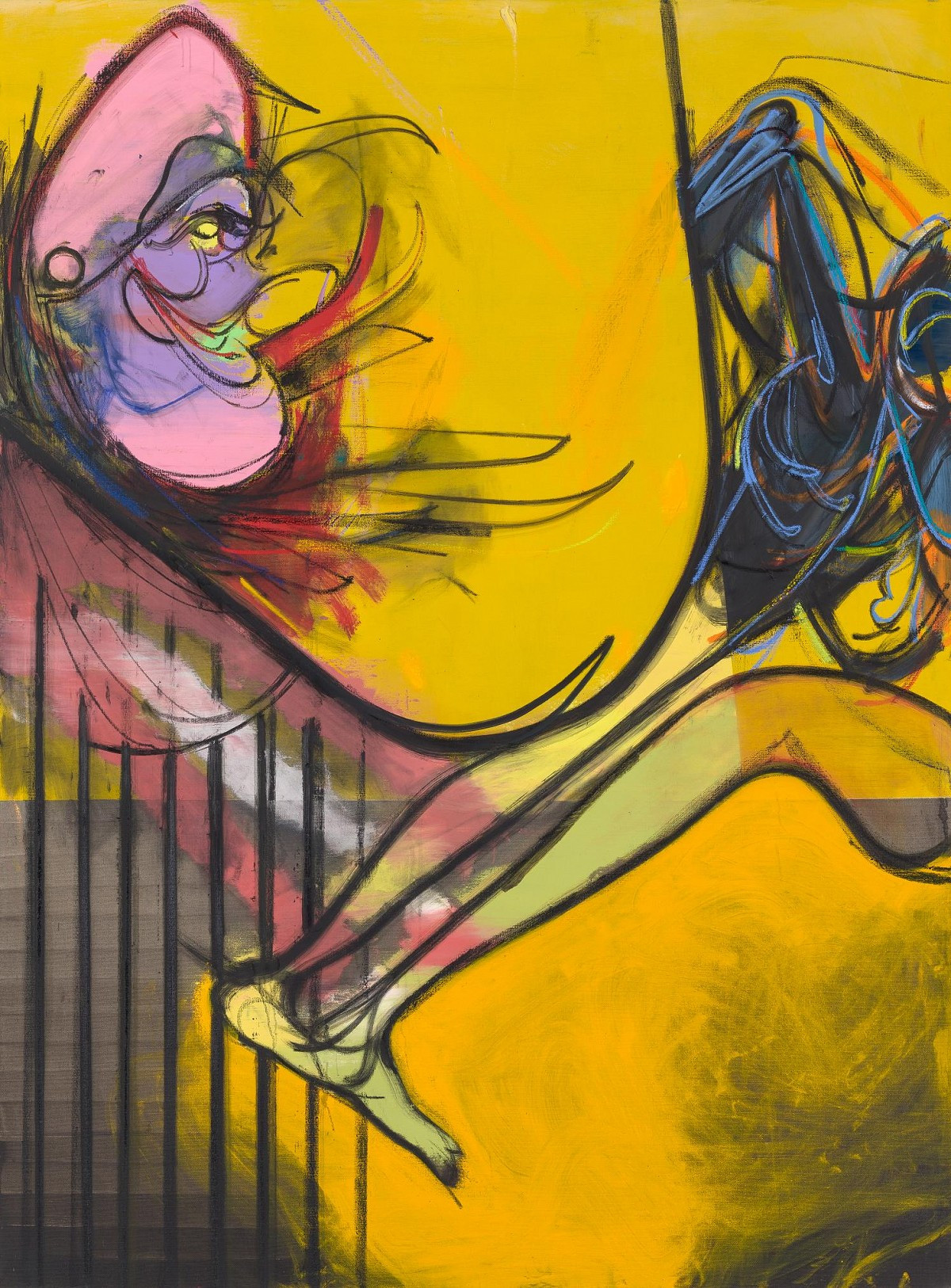Daniel Richter
Published: January, 2020, Ropac, in connection with the exhibition "So long, daddy"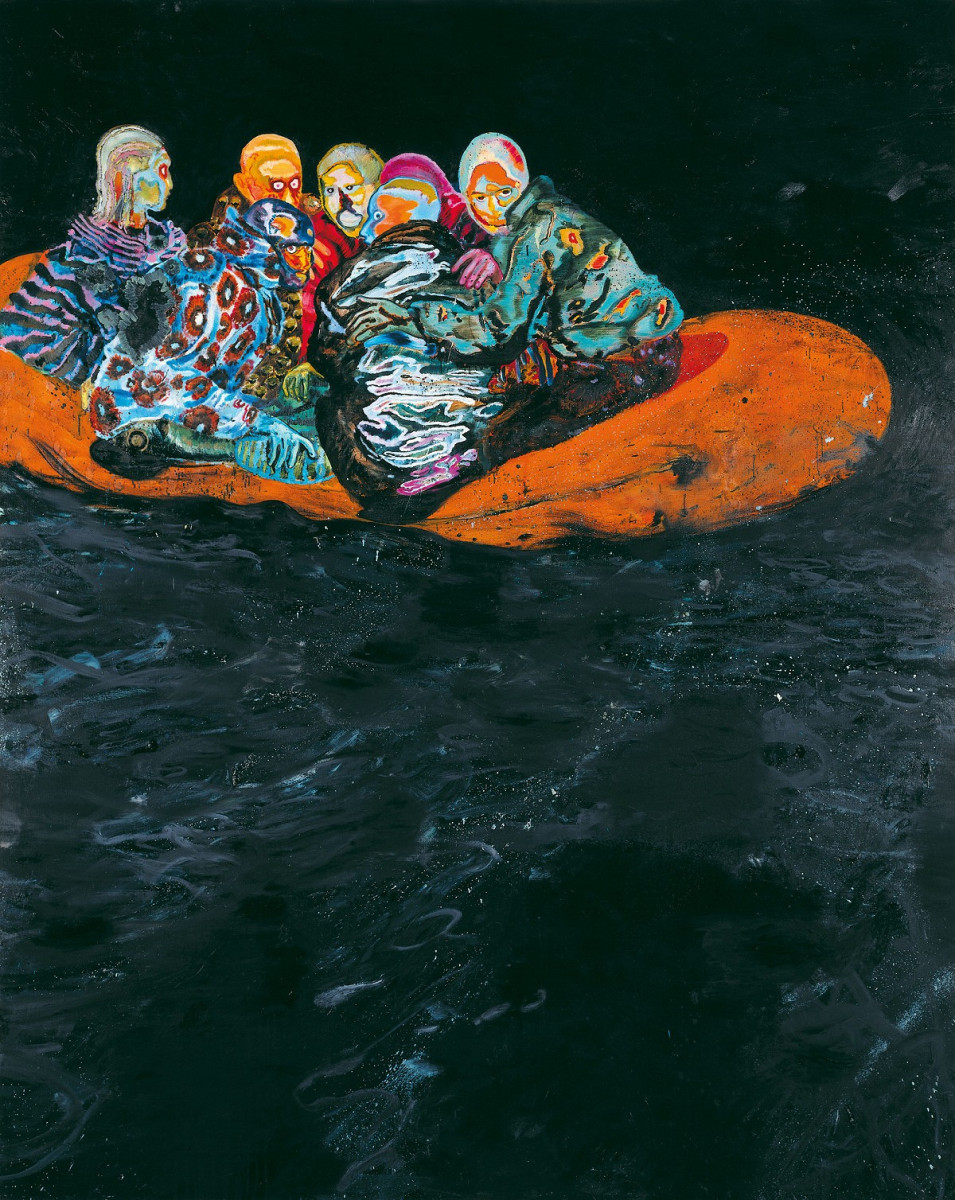
Marta Gnyp: You started the art academy when you were 30, which is quite late.
Daniel Richter: I felt very young.
MG: What did you do during your 20s?
DR: Basically, I was a loser in terms of capitalist society, but I considered myself a left radical who was into squatting and the underground.
MG: But what were you doing?
DR: I had an exciting and full life. I was reading a lot, I was politically active. I was a member of the Autonome Antifa, which started as a left radical self-defense organization after neo-Nazi attacks in Hamburg. During the eighties there was a huge squatting movement in Hamburg and Berlin that also shaped a certain underground. We squatted houses and turned them into areas where people could just try to do whatever they want.
MG: I know people from Amsterdam who did it.
DR: We had lots of friends in Amsterdam in the squatting movement there. It was a community thing: the movement opened up free space for women and helped crating a generation of feminists; you had self-organized concerts and all kinds of political activities. It had a militant aspect, as we had always got attacked by the police. Nothing has changed by the way: when you look at Saxony nowadays the police and intelligence services try to attack young anti-fascists – who are more or less harmless anarchists – while they are looking away when it comes to increasing right wing violence. They equal stupid young guys throwing stones at police cars to people who actually try to kill other people because of their color or their beliefs.
MG: You were a German living in the West, who decided to be radical left. Were you aware of what communism or Marxism has achieved or better said, ruined, in East Germany?
DR: The criticism of the Soviet Union or the so-called real existing Socialism has always existed in the radical left, which was not a part of the communist movement. It started in the mid-sixties in Italy, France, Germany and the Netherlands as movements that were critical towards the situation in the Soviet Union and the eastern bloc. The idea was not to wait for the communist party, but instead to do it ourselves.
MG: You were not celebrating the Soviet-Union as many Western intellectuals did.
DR: We all knew that Eastern Germany was the price that Germany had to pay to the Soviet Union for the 25 million people they had lost in this devastating war. The West lost 400.000 men which is still immense bloodshed, but this is another dimension given the fact that Germany erased a whole population till Moscow. When ’89, ’90 came and the Soviet Union collapsed it was clear to me that there would be shifts of power in the world and that the idea of what a democracy is will be massively changing.
MG: But did you believe in the ideology of communism? Did you want to live in a Marxist-Leninist community?
DR: No, what we wanted was to try to live a life in the Western societies according to our rules, which was also kind of an attack on the ideas of a democracy or the constitution. We knew at the same time that we might not like the Soviet Union as a state, but it was an important defense for different movements that had a right of existence in the western world.
MG: What did you do except political discussions?
DR: Punk rock.
MG: As a musician.
DR: No! Music is simply part of my life. In order to make music you have to be social and that was always my problem. The idea of social or political collectivity, yes, but in the production of art, no! as an artist I always wanted to be alone.
MG: What about having a career: was this something bourgeois?
DR: Having a career was bourgeois, wearing brands was bourgeois, the whole idea of consumption was considered hideous.
MG: It sounds like a soft dictatorship of the so-called radical left.
DR: Which it also was. Once you’re in a community there’s always a tendency to homogenize and there’s always a tendency to act against that. The communist movement was a big promise of intellectualism and equality for all, but it kept also the danger of repression and control and dictatorship.
MG: You left the community after the fall of the Wall.
DR: I had been in a long-term relationship that faltered; I had been in a movement that faltered; I turned 30 and was looking at friends some of whom already had died or turned into frustrated alcoholics, and I thought, “Well, Do I want to do this for the rest of my life?”. I was working in a record shop which I really liked because a record shop is like a library for music. I didn’t have money, I didn’t have wealthy parents, I didn’t have any education, so I was a bum by definition of the State. The only thing that I had always done and I’d always been obsessed with, was images.
MG: What did you do with images?
DR: I made posters and record sleeves for undergrounds bands; it was a community thing. When it comes to art, I never understood the difference in terms of production of images. I had no idea how to define art, why is a Robert Crump drawing less than a Matisse painting? It was the only thing that I thought worth understanding. I was wondering whether I could transfer my drawings into something that is art. On top of that, art was the only thing you could study with no high degree education.
MG: So becoming an artist was the only option you thought to have. You are not an artist by birth.
DR: When you come from the underground scene and you look at the first aesthetic decisions of the so-called punk movement you can see the influence of Dada, you can see traces of Futurism, you see collages from Jamie Reid on the Buzzcocks’ covers or influence of John Heartfield or René Gruau. This link has always existed theoretically because of the international Situationists.
MG: Where did you study?
DR: In Hamburg with Werner Büttner. The Academy was a free space to do something that you cannot do anywhere else. It was a structure that made me believe in it – you can be an artist in your kitchen but then you’re not really part of the art system. As we were talking about the history of the twentieth century and the shattered utopias Werner would give me weird tasks like to make 40 woodcuts on the topic of failure, and I did! For me he was very a good teacher.
MG: Do you give back now? You’ve been teaching since 2004; do you believe that teaching could be good for people?
DR: I do. I don’t know whether I’m a good teacher because I just offer information and try to talk as freely as possible using contradictions and idiotic positions. I’m not interested in producing good painters. For example, Stefanie Sargnagel who is a successful Austrian writer was one of my students and produced fanzines.
MG: Back to you as student, did you finish the academy?
DR: After two or three years I got dismissed because I didn’t attend the courses. I came to a point where I understood that I can’t learn any more. I entered the world of let’s call it non-figurative painting.
MG: Why this sudden interest in non-figurative painting?
DR: When you come from a realistic or naturalistic drawing it’s very hard to get rid of it. You have to de-learn yourself, you have to get rid of the things you know. In the beginning, whenever I started a drawing it looked like somebody else’s, which was unavoidable. The idea of the promise of absolute freedom that relates to abstract or non-figurative painting interested me. Free forms, putting too much into a painting, trying to overwhelm people with elements of graffiti and quotes of already existing painters, doing intelligent things that appear to be stupid – for me it was liberating. I thought that everybody was interested in painting, but in the nineties nobody was.
MG: The nineties declared painting dead.
DR: The only person that was accepted among theorists or white cube critics was Albert Oehlen, perhaps Jutta Koether and Charlene von Heyl. I was assistant to Albert. When Charlene moved to New York she let me stay a month in her Studio in Düsseldorf – because I never had a studio and I never had money.
MG: Have you ever become a part of the Cologne scene?
DR: My approach to painting was much more vital or unreflected in comparison to that of Jutta and Albert, Michael Krebber, Justus Köhncke, Michael Krebber, Sergej Jensen, Kai Althoff. They were all about quoting and dandyism.
MG: Was this intimidating for you?
DR: A little, but I had one advantage: they started getting politicized while I had been doing that my whole life. For me they were just like rich kids playing communism. It was awkward, also because I could sense that this scene didn’t like what I did. This phase ended with the show ‘German Open’ in 1999 – a huge show ten years after the fall of the Wall – including Michel Majerus, Kai Althoff, John Bock, Jonathan Meese – with just two classical painters, Neo Rauch and me. That was the point when painting came back.
MG: If we speak about German painting and the generations after the war: Gerhard Richter and Polke; Baselitz and Kiefer, die neuen Wilde, Kippenberger, Oehlen, Förg and many others, for you, working in the 90s it must have been double trouble because on the one side the art discourse has declared the death of the painting and on the other whatever you touched had been already digested by other post-war German painters.
DR: Yes, that was part of the problem. Another problem was a whole new generation from the East that was following the Kokoschka way, like the Heisigs and Tübkes and Wewerkas. I thought it was productive – I have never been a purist. I wouldn’t say that I’m a German painter, but still, I was raised with certain ideas and these ideas are German. There’s a certain idea of idealism, of challenging the subject, the expression in relation to the control. Germany is a nation that came too late: Germans couldn’t be Impressionists, so they had to be Expressionists. Everything is bit clumsy and kind of ugly, but it has a certain energy in it.
MG: What about the idea of change?
DR: I was taught that once you achieve something you have to change it because it gets boring. Sure, there’s also a lot of boring self-punishment in that. Look at Albert’s (Oehlen) works – every three or four or five years there’s a change and there’s a new challenge. Probably the German painting still celebrate certain contradictions, certain ugliness or clumsiness or maybe just to annoy.
MG: Interestingly enough, in the international art market, German painting has the label of seriousness. There is this persistent idea that Germans have something to say.
DR: There’s a lot of painting in America that I think is quite interesting nowadays. Remarkably, they are mostly women artist, such as Nicole Eisenman or Dana Schutz. They occupy a field that has not been touched over the years – aside from John Currin with his reactionary kinky shit.
MG: There’s a lot of irony in it.
DR: There’s a lot of irony and maybe that’s a little too safe for me. I’d rather be the elephant in the room that looks like an elephant. I like painting, I like the different shapes, the modulation, I like the sound you can create, I like the translucency as much as fat paint and I like thin lines as much as I like painting with the hands. I just like the possibilities it gives me to find out something in the process of painting about painting but also supposedly about me.
MG: When did you start to feel confident about your painting?
DR: I never felt really confident.
MG: Were your peers’ comments important to you?
DR: They used to be important, but they always have to be distrusted. People that you like tend to like things that you like, and which are established. I experienced this when I started a body of work a few years ago, and some of my friends mocked me for it saying, “are you trying to be an unknown Hungarian painter from 1958 coping with Rothko and Gaston or what?” But that was exactly what I liked about these paintings, that it was very hard to put these works into art history. They didn’t offer what Baselitz calls ‘the nose’ in the painting. There’s a leg, you look at that leg and from there you can decipher the whole thing and then you can decide whether you treat it as a leg or nearly figurations or is it about beauty or aggression.
MG: Do you show your work during your working process to other people?
DR: There’s nobody coming here! (laughter) Very rarely few friends come by and I listen to what they say. Even when people say things that you think are wrong it may still help because it forces you to be more precise about your own thoughts or feelings.
MG: You just mentioned abstraction and figuration; do you think that we will ever get rid of this opposition?
DR: There is non-representative and representative work, although most painting is nowadays shifting. There’s work that’s definitely non-representative – like the abstract or like the work I talked about, when you really have to search for something that looks like an element from nature, but that’s the wrong approach. Painting is about a way of thinking, the process and about trying to do something new and not safe. I don’t like to categorize; when you read a great comic book that has a relation between language, narration and drawing it’s a great piece of art that gives you satisfaction that only this kind of art can offer to you.
MG: When is a painting good? You mentioned several times that has to be new.
DR: Yes, that’s my private obsession. I still believe in the progress of mankind and I’d like to see that in art, at least at bit.
MG: How can art progress?
DR: With painting it seems to be nearly impossible. When you look at formal choices of figuration, it ends somewhere around the time of Picasso. The non-representative painting ends somewhere in the late fifties in New York. Then came this neurotic mixed German thing: Gerhard Richter is a provincial misunderstanding of pop art and so is Polke, but Polke is more intelligent and reflective than the painters he tried to be with; he’s superior because he opens painting up to all kinds of materials.
MG: We should thank God for the provinciality of Germany.
DR: You could say that! I mean, the provinciality of Germany is what brought us Hegel and Kant and Karl Marx and also Bach and Mahler.
MG: And Hitler as well.
DR: Hitler was Austrian! – and provinciality is a phenomenon from before the WW1. Hitler is just the exaggeration of a certain conservative line that goes back to Austria, to Konrad Lueger, anti-semitism as a pseudo-scientific method, and Hitler is not an artist. He’s not even worth mentioning.
MG: I thought more about Germany’s special path, the third way.
DR: The special way of Germany, the nineteenth century is embedded in that, in people living in the countryside brooding about the big ideas
MG: Like Herder.
DR: Herder and Schilling and Fichte and Beethoven and Brahms and all that comes from that. It’s also a result of not being part of an enlightened huge nation.
MG: Romantic individualism versus rationality of the progress.
DR: I like the idea of progress although today this term has become anachronistic; I’m not talking about the avantgarde. today’s avantgarde is not in the painting by probably somewhere in the digital world, or with people like Hito Steyerl. Still, painting offers something that nothing else offers: the main reason to enter the world of painting is that you can do it alone and you don’t need an assistant, neither technical understanding.
MG: Do you work with assistants?
DR: No, I work with a guy who makes movies for me and cut my hair now and then.
MG: A very talented one I can confirm. Speaking about the talent, you never mentioned this term. You don’t believe in the idea of talent?
DR: I used to do a lot of martial arts: you just see these guys that after three hours of training are able to move their bodies in a way that others need years for and that’s what I would call a talent. Talent means that this person is able to occupy that specific field and understand it faster than others, but what does it mean in art? For example, when it comes to realistic painting you could see thousands of people in the former Eastern Germany that could draw better than any established artist, if ‘better’ means that you could see that exact reality in a drawing. But what does it mean? What’s it worth for understanding the world anew, or another way of seeing or expanding the language of paintings? It’s worth nothing.
MG: It gives you a solid basis for further explorations.
DR: It could be contra-productive. When established pianists want to do noise music, they can’t. The person that learns to play the piano very well has to undergo a complete deconstruction to play as a free musician.
MG: Another issue, I was wondering about how do you exist as a white heterosexual male artist, which is at this moment a very problematic position.
DR: Which is fine! Problematic is that most white heterosexual males are problematic. After thousands of years of their shitty and mediocre art it is absolutely okay if now the museums are flooded by people that are not white heterosexual men with a dominant behavior but black lesbian women with non-dominant behavior. The point now is that it’s necessary to find out what is interesting in that and not denounce it.
MG: Do you think the current art system has oppressed women?
DR: I have been talking about this already 15 years ago. There’s always been an informal structure of buddying among artists that has kept women out. It was not very reflective and there was no conspiracy behind it, it’s just buddy behavior. I always thought that unfair. If somebody offers you something and it’s great then it’s just great and it doesn’t matter if that person has a dick, a pussy or none of that, or if it’s black or white or dwarf or in a wheelchair, but it is about the idea of fairness. When this is established, we would be able to say about some paintings “Yes, it means well but it’s shitty.” Most of the contemporary painting is shitty by the way.
MG: You mean is badly painted, boring, not innovative or what?
DR: In the paintings originating from ex Eastern bloc, you see a come-back of nostalgic sentimental Indie rock feeling that people love because it gives them the depth and the tragedy but on a very shallow level. Formalistically it is like living out of the garbage can of Gerhard Richter, not one step further; all in greyish ochre colours with always heavy topics; conservative surrealism based on ideology that likes feelings and sentiment, rather than thinking about what is happening in the painting. Then, on the other hand, in the West – when it comes to white heterosexual painting – it is not so much formalistic radicalism because it is not radical at all; all looks like a design for curtains done by Jackson Pollock rechewing some postmodern ideas. The only people who in my opinion are really trying to achieve meaning and make choices that are against the heroism of painting are people like Eisenman or Dana Schutz.
MG: Is there a big difference between American and German attitude in your opinion?
DR: There is. When you are a New York artist and you establish a certain language, you stay with that for the rest of your life because that shows your coherence, your confidence; you establish not only a market but an intellectual consistency and that is respected. A blind man can see a Christopher Wood painting from 100 miles away. When I was young, I thought this wrong, now I think it’s totally legitimate. One can say, “This is my definition of a painting, I achieved this area and I squeeze it out like an orange.” Totally acceptable but against my nature and my nature supposedly is part of how I’ve been brought up.
MG: If you aim at expending the language of painting what about social issues? Your painting Tarifa has become a prophecy of a refugee crisis.
DR: I found this newspaper photo and thought, if I shift around and cut it, it would be interesting to paint because the only action is in the upper 30% of the image. The main challenge was how to paint the black underneath so that it looks vital, dark and dangerous on the canvas. I added psychedelic figures and thought that they could look like a symbol for people drifting in a dreamlike stance. It’s not my fault that the refugee crisis grew worse
MG: and claimed that image.
DR: In 2001 people thought it was a painting about something like a floating carpet and an oriental dream.
MG: What is very interesting is that the meaning of images and paintings are changing throughout the history.
DR: It is. I made paintings about historical events, speculating about how they could have ended differently but I stopped that because you have to really be into the topic, if not it turns into some meaningless symbolism like scholastic paintings of the Catholic church of the 18th century or something where every symbol is like a secret symbol. I wanted another way of speaking about German history, not about Third Reich by the way.
MG: Does it make sense to address the subject time and again?
DR: I like a lot how Baselitz did it. His works showed more historical insights than Gerhard Richter’s. Take Richter’s four abstract paintings of Buchenwald that are supposed to cover haunting images: art historical bullshit and very opportunistic. The enthusiasm of the press was depressing.
MG: He is the most celebrated artist in the international art market.
DR: You know why Gerhard Richter so impressive? Because he makes everybody feel intelligent. His work is so easy understandable that it makes everybody feels like an intellectual and people like to be superior. They don’t like to be irritated, they don’t like to be confronted with their stupidity or anger.
MG: I was looking at your auction results. You were big in 2006, 2007, you were this artist going very fast and then you had the break.
DR: I don’t care about it now.
MG: Did this effect you somehow?
DR: It did, it made me nervous. I know artists that have been much more successful in the auction market and they got psychological problems. The moment you put an extra zero at the end at auction, you have a lot of buyers who would want a typical painting of yours because they want to be sure that if they buy your painting now it will be 50% more in three years. A person like me can’t guarantee that because I’m always changing. That’s also the reason why Sigmar Polke was never was a huge success in the auction market in NY, or Martin Kippenberger will never be. They are worth a lot of money, but in comparison to younger successful artists in the West that is nothing.
MG: Were you watching auctions yourself?
DR: I used to, but I’m not really interested now, or I am interested in terms of analyzing it. I remember people, as we know we are evil, who came up after 2008 saying, “Your prices used to be high but now they are going down. How do you feel about that?” And then you have to think about what you say without looking like a bitter man or a disappointed artist.
MG: It must be hard.
DR: It was hard because I’m vain and I have high self-esteem; not because I think my work is so great, but because I think other people’s work is so shitty. I don’t care if it costs 50 million. People that like my stuff like it because it means something to them. I believe at least that for a lot of people that’s the point.
MG: Do prices change the attitude to your own work?
DR: High prices put a lot of pressure on artists. I know a few younger successful artists: when I sell a painting it’s maybe a car but when they sell a painting it’s a house, and if you’re from New York it’s a house in the Hamptons. It’s a very different attitude towards your own work when you think whatever shit you do is a house in the Hamptons.
MG: A very few do have this kind of market.
DR: Very few; the artists in this category don’t change their approach. When people look at what I have done the last 20 years there is maybe a consistency in terms of seriousness or method but there’s no way that you could say that painting from 2003 looks as a painting from 2009 or 2000. They may have the same energy or the same frustration or humor or depth or plausibility, but they are too obviously different. That is a good thing when you want to keep at least the worst aspects of the market art off. Having said that, we should not bash the market because we are all in that world, from Kunstverein in Göttingen to Larry Gagosian.
